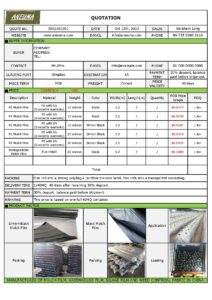Mulch films have become a vital tool in modern agriculture, offering a range of benefits that enhance crop yields and overall farm profitability. These plastic films, when laid over the soil surface, help in conserving moisture, suppressing weed growth, and regulating soil temperature. As with any agricultural input, it is essential for farmers to assess the cost-effectiveness of using mulch films. In this article, we will conduct a cost-benefit analysis of mulch film usage to understand its economic impact on farming operations.
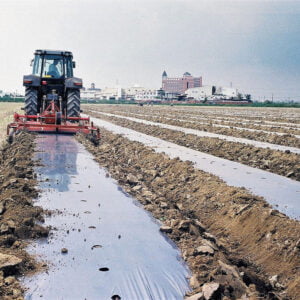
Cost of Mulch Film: The first consideration in the cost-benefit analysis is the expense associated with acquiring and applying mulch films. The cost of mulch films can vary depending on factors such as type, thickness, and size. Biodegradable mulch films are generally more expensive than conventional plastic films due to their eco-friendly nature. Additionally, there are costs related to the application of the mulch films, such as labor and machinery. These costs need to be factored into the overall expenditure.
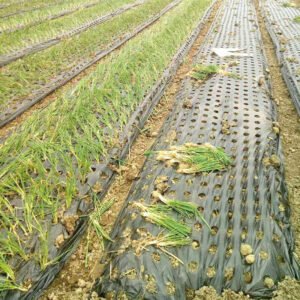
Water Conservation: One of the primary advantages of using mulch films is their ability to conserve water. By preventing evaporation and reducing weed growth, mulch films help retain moisture in the soil, ensuring a more efficient use of water resources. This can be especially crucial in regions facing water scarcity, where every drop of water matters.
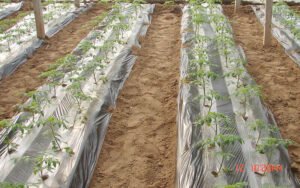
Increased Crop Yields: Studies have shown that using mulch films can lead to significant increases in crop yields. The regulated soil temperature and moisture content created by the mulch films create an ideal environment for plant growth, resulting in higher yields and improved crop quality. Higher yields can directly translate into higher revenue for farmers.
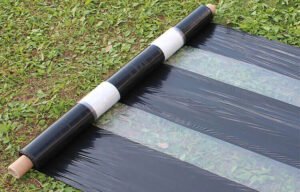
Weed Suppression: Mulch films act as a physical barrier that inhibits weed growth. By suppressing weed competition, mulch films reduce the need for manual weeding or herbicide application, which can lead to cost savings for farmers. Moreover, fewer weeds mean less competition for nutrients and water, benefiting the crops.

Soil Health and Fertility: Mulch films contribute to better soil health and fertility. They protect the soil from erosion caused by wind or water, preventing nutrient loss and maintaining the integrity of the topsoil. Over time, the decomposition of biodegradable mulch films adds organic matter to the soil, enhancing its fertility and structure.

Pest and Disease Management: In some cases, mulch films can act as a barrier against soil-borne pests and diseases, reducing the need for chemical interventions. This can result in lower pesticide costs and decreased negative environmental impacts.

Recycling and Disposal Costs: Conventional plastic mulch films, though effective, can pose challenges in terms of disposal and environmental impact. Proper disposal or recycling methods should be considered, as the accumulation of plastic waste can be a concern. On the other hand, biodegradable mulch films eliminate the disposal issue as they break down naturally over time.

Overall, the economic benefits of using mulch films are substantial, especially when the technology is employed correctly, and factors like crop type, climate, and local agricultural practices are taken into account. However, the cost-effectiveness may vary depending on the specific circumstances of each farm. For example, small-scale farmers with limited resources may find it more challenging to justify the initial investment in mulch films.

A cost-benefit analysis of mulch film usage in agriculture reveals numerous economic advantages, such as increased crop yields, water conservation, weed suppression, and improved soil health. However, farmers must carefully consider the initial costs, disposal methods, and specific crop requirements before implementing mulch film technology. By making informed decisions and adopting sustainable practices, farmers can maximize the benefits of using mulch films and drive their farming operations towards greater profitability and environmental responsibility.
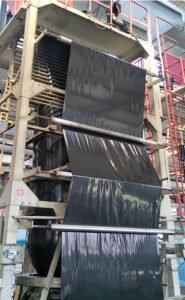
If you are interested in more about mulch film, please visit our website about mulch film. You can learn a lot of information from raw material to production, packaging, datas, trade conditions etc.

Let’s conduct a detailed cost-benefit analysis for using mulch film in tomato farming on a specific farm in California, USA. For this example, we’ll consider a medium-sized tomato farm of 10 acres.
- Cost of Mulch Film: Suppose the cost of mulch film per acre is $200, and the farm requires 1 roll of mulch film per acre. The total cost for mulch film for the entire farm would be: Total Cost of Mulch Film = $200/acre * 10 acres = $2,000
- Water Conservation: By using mulch film, the farm can save an estimated 25% of irrigation water due to reduced evaporation. Let’s assume that the farm spends $20,000 annually on water for irrigation without using mulch film. With mulch film, the water savings would be: Water Savings = 25% * $20,000 = $5,000
- Increased Crop Yields: Studies have shown that using mulch film can lead to a 20% increase in tomato yields. Considering the average yield without mulch film is 30,000 pounds per acre, the increase with mulch film would be: Yield Increase = 20% * 30,000 pounds/acre = 6,000 pounds/acre
- Market Price for Tomatoes: Assuming the market price for tomatoes is $0.50 per pound, the total revenue increase due to higher yields would be: Revenue Increase = 6,000 pounds/acre * $0.50/pound * 10 acres = $3,000
- Weed Suppression: Using mulch film reduces the need for manual weeding, saving the farm approximately $1,000 in labor and herbicides over the growing season.
- Soil Health and Fertility: The improved soil health and fertility provided by mulch film lead to a 15% reduction in fertilizer costs. Assuming the farm spends $10,000 annually on fertilizers, the savings would be: Fertilizer Savings = 15% * $10,000 = $1,500
- Pest and Disease Management: Mulch film acts as a barrier against soil-borne pests and diseases, reducing the need for chemical interventions. Let’s assume that without mulch film, the farm spends $2,500 on pesticides annually. With mulch film, the savings would be: Pesticide Savings = $2,500
- Recycling and Disposal Costs: In this example, we’ll use biodegradable mulch film to eliminate the need for disposal costs. There are no additional costs related to recycling or waste management.
Now, let’s calculate the total cost savings and benefits:
Total Cost Savings = Water Savings + Revenue Increase + Weed Suppression Savings + Fertilizer Savings + Pesticide Savings Total Cost Savings = $5,000 + $3,000 + $1,000 + $1,500 + $2,500 = $13,000
Total Cost of Mulch Film = $2,000
Net Benefit (Cost Savings – Mulch Film Cost) = $13,000 – $2,000 = $11,000
The cost-benefit analysis shows that by using mulch film on a 10-acre tomato farm in California, the farm could save a net amount of $11,000 for a single growing season. The investment in mulch film would yield significant benefits, including water conservation, increased crop yields, weed suppression, improved soil health, and reduced pesticide and fertilizer costs. The net benefit would vary based on crop type, regional factors, and farm size, but this example demonstrates the economic advantages of incorporating mulch film technology in agriculture.

